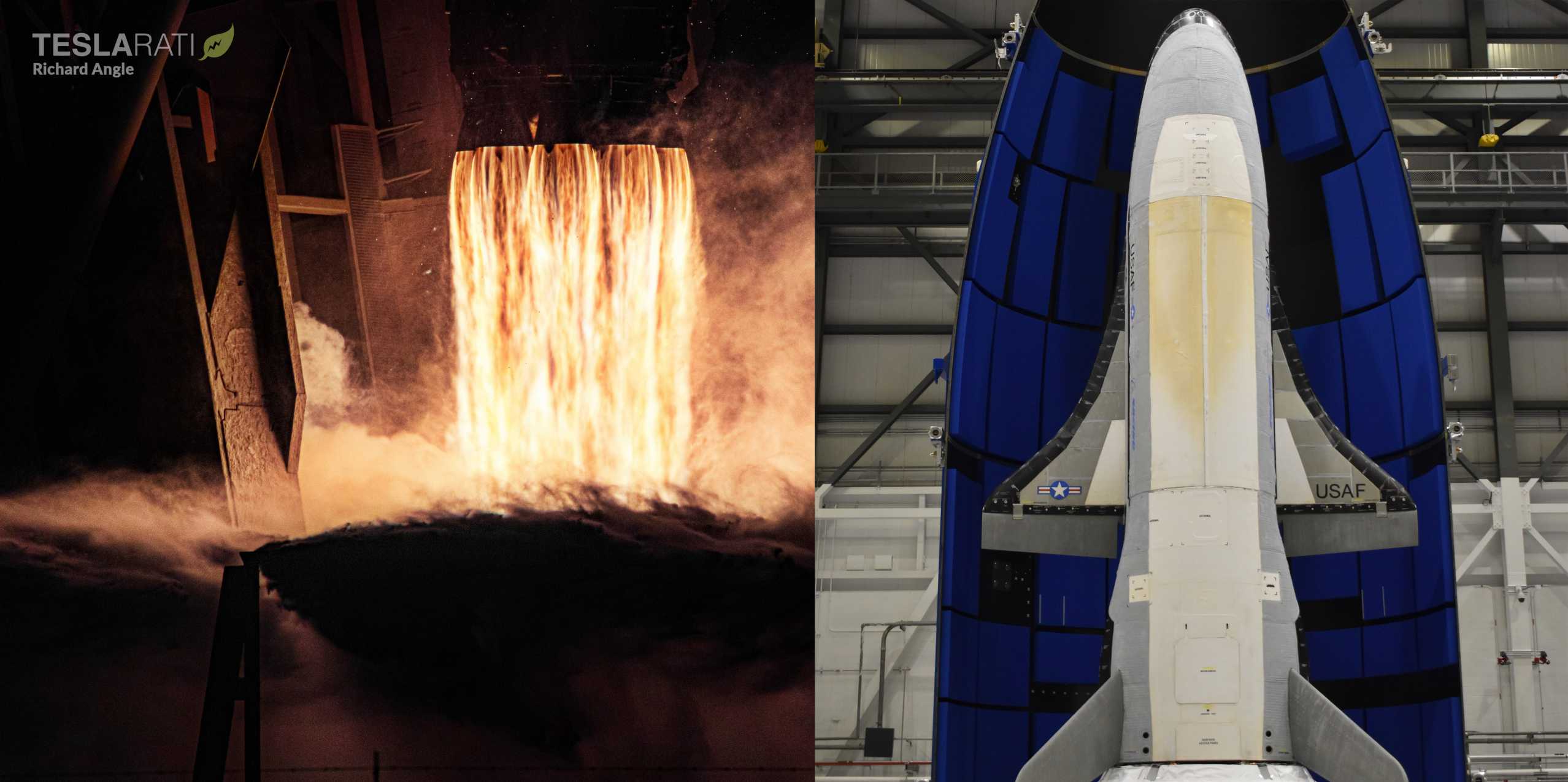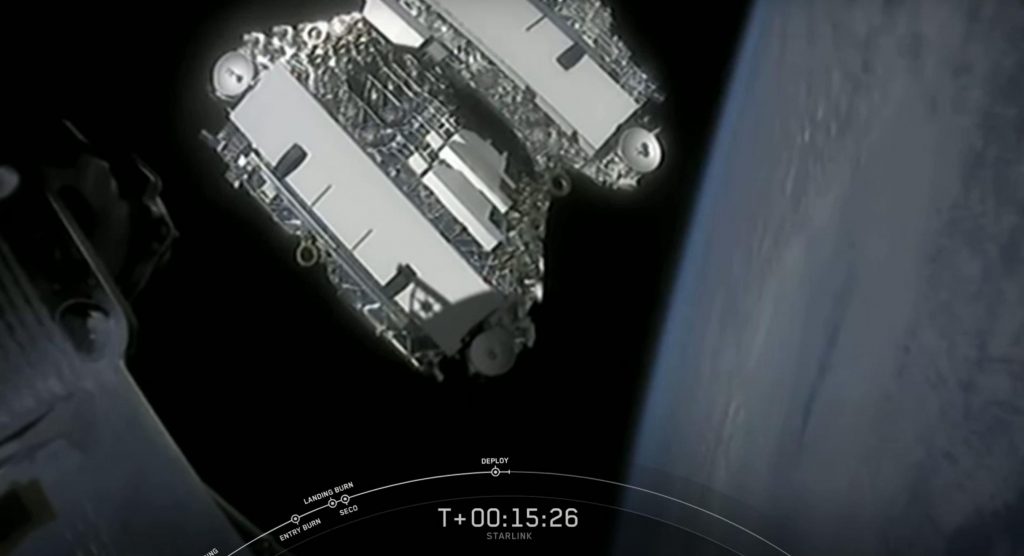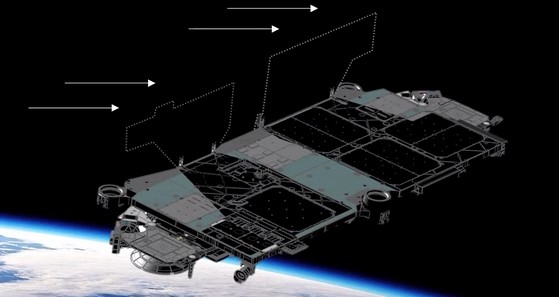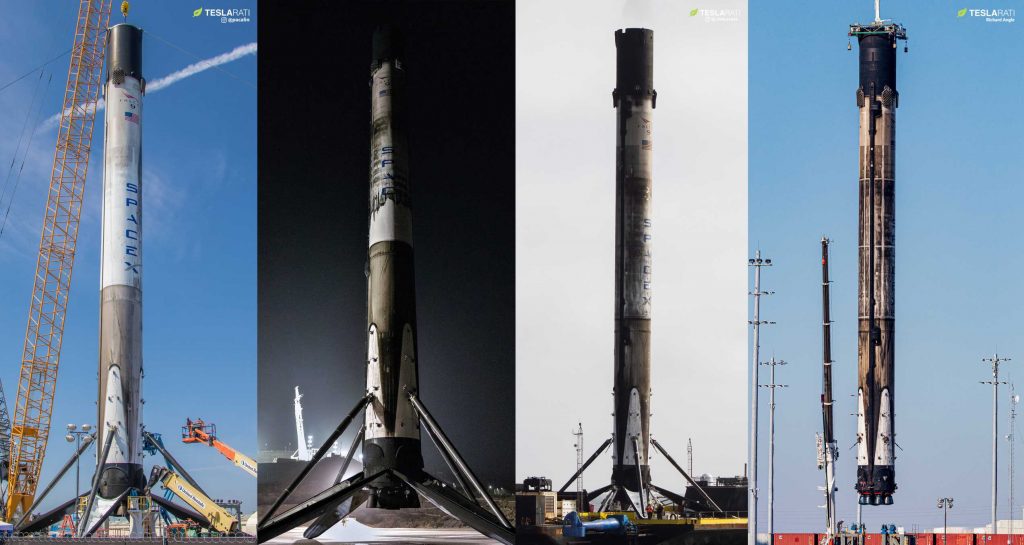

News
SpaceX, ULA aim for back-to-back Starlink, spaceplane rocket launches
SpaceX and ULA are just four days away from a ~20-hour period that could see them attempt back-to-back launches of their respective workhorse rockets, potentially sending both Starlink satellites and a US military space plane into orbit.
If successful, the two missions would mark the fastest turnaround for launches performed by the two competing companies from the same coast, a testament to improvements made by the US Air Force (now Space Force) outfits that operate the range. The ultimate goal of those upgrades is to enable up to 40 annual orbital-class launches from Cape Canaveral Air Force Station (CCAFS) pads – a cadence not seen in the US since the 1960s.
As of now, the United Launch Alliance (ULA) is tracking towards 8-10:30 am EDT, May 16th for the sixth launch of Boeing’s small X-37B spaceplane, used by the military for orbital experiments and other more mysterious purposes. SpaceX’s eighth launch of 60 Starlink satellites could follow as few as 20 hours later at approximately 4 am EDT, May 17th, carrying the next batch of operational internet satellites into low Earth orbit (LEO).

Aside from a potentially impressive back-to-back launch from the United States’ only two commercial orbital launch providers, SpaceX’s Starlink-7 mission is also expected to include several important milestones for reusable rocketry and the company’s rapidly-growing satellite constellation. Notably, SpaceX and CEO Elon Musk have recently stated that the mission will be the first launch of Starlink satellites with a prototype ‘visor’ designed to make each spacecraft nearly invisible from the ground.

If SpaceX’s so-called VisorSat prototypes are successful, the company plans to outfit all future Starlink satellites with visors. Additionally, the Starlink-7 spacecraft will be the first to trial a new approach to satellite orientation en masse, a change also designed to mitigate the constellation’s impact on ground-based astronomy. By angling satellites in such a way that they give very little surface area for sunlight to reflect off of, SpaceX could potentially decrease or fully remove ground reflections from orbiting satellites, useful even if only temporary.

Additionally, SpaceX is set to launch – and attempt to land – Falcon 9 booster B1049 for the fifth time in support of Starlink-7, only the second time an orbital-class booster has flown five times. If B1049 is able to stick a landing aboard drone ship Of Course I Still Love You (OCISLY), Starlink-7 will also mark the first time a SpaceX booster has completed five landings, also setting B1049 up to become the first booster to attempt its sixth launch in the near future.


As always, delays are par for the course in the world of orbital launches, so it’s possible that one of the two launches scheduled on May 16th and 17th will slip. After Starlink-7, SpaceX’s next orbital launch – Crew Dragon’s Demo-2 NASA astronaut launch debut – is perhaps the most important mission in the company’s 18 year history and is scheduled to lift off no earlier than (NET) May 27th.

Elon Musk
Elon Musk and Tesla AI Director share insights after empty driver seat Robotaxi rides
The executives’ unoccupied tests hint at the rapid progress of Tesla’s unsupervised Robotaxi efforts.

Tesla CEO Elon Musk and AI Director Ashok Elluswamy celebrated Christmas Eve by sharing personal experiences with Robotaxi vehicles that had no safety monitor or occupant in the driver’s seat. Musk described the system’s “perfect driving” around Austin, while Elluswamy posted video from the back seat, calling it “an amazing experience.”
The executives’ unoccupied tests hint at the rapid progress of Tesla’s unsupervised Robotaxi efforts.
Elon and Ashok’s firsthand Robotaxi insights
Prior to Musk and the Tesla AI Director’s posts, sightings of unmanned Teslas navigating public roads were widely shared on social media. One such vehicle was spotted in Austin, Texas, which Elon Musk acknowleged by stating that “Testing is underway with no occupants in the car.”
Based on his Christmas Eve post, Musk seemed to have tested an unmanned Tesla himself. “A Tesla with no safety monitor in the car and me sitting in the passenger seat took me all around Austin on Sunday with perfect driving,” Musk wrote in his post.
Elluswamy responded with a 2-minute video showing himself in the rear of an unmanned Tesla. The video featured the vehicle’s empty front seats, as well as its smooth handling through real-world traffic. He captioned his video with the words, “It’s an amazing experience!”
Towards Unsupervised operations
During an xAI Hackathon earlier this month, Elon Musk mentioned that Tesla owed be removing Safety Monitors from its Robotaxis in Austin in just three weeks. “Unsupervised is pretty much solved at this point. So there will be Tesla Robotaxis operating in Austin with no one in them. Not even anyone in the passenger seat in about three weeks,” he said. Musk echoed similar estimates at the 2025 Annual Shareholder Meeting and the Q3 2025 earnings call.
Considering the insights that were posted Musk and Elluswamy, it does appear that Tesla is working hard towards operating its Robotaxis with no safety monitors. This is quite impressive considering that the service was launched just earlier this year.
Elon Musk
Starlink passes 9 million active customers just weeks after hitting 8 million
The milestone highlights the accelerating growth of Starlink, which has now been adding over 20,000 new users per day.

SpaceX’s Starlink satellite internet service has continued its rapid global expansion, surpassing 9 million active customers just weeks after crossing the 8 million mark.
The milestone highlights the accelerating growth of Starlink, which has now been adding over 20,000 new users per day.
9 million customers
In a post on X, SpaceX stated that Starlink now serves over 9 million active users across 155 countries, territories, and markets. The company reached 8 million customers in early November, meaning it added roughly 1 million subscribers in under seven weeks, or about 21,275 new users on average per day.
“Starlink is connecting more than 9M active customers with high-speed internet across 155 countries, territories, and many other markets,” Starlink wrote in a post on its official X account. SpaceX President Gwynne Shotwell also celebrated the milestone on X. “A huge thank you to all of our customers and congrats to the Starlink team for such an incredible product,” she wrote.
That growth rate reflects both rising demand for broadband in underserved regions and Starlink’s expanding satellite constellation, which now includes more than 9,000 low-Earth-orbit satellites designed to deliver high-speed, low-latency internet worldwide.
Starlink’s momentum
Starlink’s momentum has been building up. SpaceX reported 4.6 million Starlink customers in December 2024, followed by 7 million by August 2025, and 8 million customers in November. Independent data also suggests Starlink usage is rising sharply, with Cloudflare reporting that global web traffic from Starlink users more than doubled in 2025, as noted in an Insider report.
Starlink’s momentum is increasingly tied to SpaceX’s broader financial outlook. Elon Musk has said the satellite network is “by far” the company’s largest revenue driver, and reports suggest SpaceX may be positioning itself for an initial public offering as soon as next year, with valuations estimated as high as $1.5 trillion. Musk has also suggested in the past that Starlink could have its own IPO in the future.
News
NVIDIA Director of Robotics: Tesla FSD v14 is the first AI to pass the “Physical Turing Test”
After testing FSD v14, Fan stated that his experience with FSD felt magical at first, but it soon started to feel like a routine.

NVIDIA Director of Robotics Jim Fan has praised Tesla’s Full Self-Driving (Supervised) v14 as the first AI to pass what he described as a “Physical Turing Test.”
After testing FSD v14, Fan stated that his experience with FSD felt magical at first, but it soon started to feel like a routine. And just like smartphones today, removing it now would “actively hurt.”
Jim Fan’s hands-on FSD v14 impressions
Fan, a leading researcher in embodied AI who is currently solving Physical AI at NVIDIA and spearheading the company’s Project GR00T initiative, noted that he actually was late to the Tesla game. He was, however, one of the first to try out FSD v14.
“I was very late to own a Tesla but among the earliest to try out FSD v14. It’s perhaps the first time I experience an AI that passes the Physical Turing Test: after a long day at work, you press a button, lay back, and couldn’t tell if a neural net or a human drove you home,” Fan wrote in a post on X.
Fan added: “Despite knowing exactly how robot learning works, I still find it magical watching the steering wheel turn by itself. First it feels surreal, next it becomes routine. Then, like the smartphone, taking it away actively hurts. This is how humanity gets rewired and glued to god-like technologies.”
The Physical Turing Test
The original Turing Test was conceived by Alan Turing in 1950, and it was aimed at determining if a machine could exhibit behavior that is equivalent to or indistinguishable from a human. By focusing on text-based conversations, the original Turing Test set a high bar for natural language processing and machine learning.
This test has been passed by today’s large language models. However, the capability to converse in a humanlike manner is a completely different challenge from performing real-world problem-solving or physical interactions. Thus, Fan introduced the Physical Turing Test, which challenges AI systems to demonstrate intelligence through physical actions.
Based on Fan’s comments, Tesla has demonstrated these intelligent physical actions with FSD v14. Elon Musk agreed with the NVIDIA executive, stating in a post on X that with FSD v14, “you can sense the sentience maturing.” Musk also praised Tesla AI, calling it the best “real-world AI” today.








